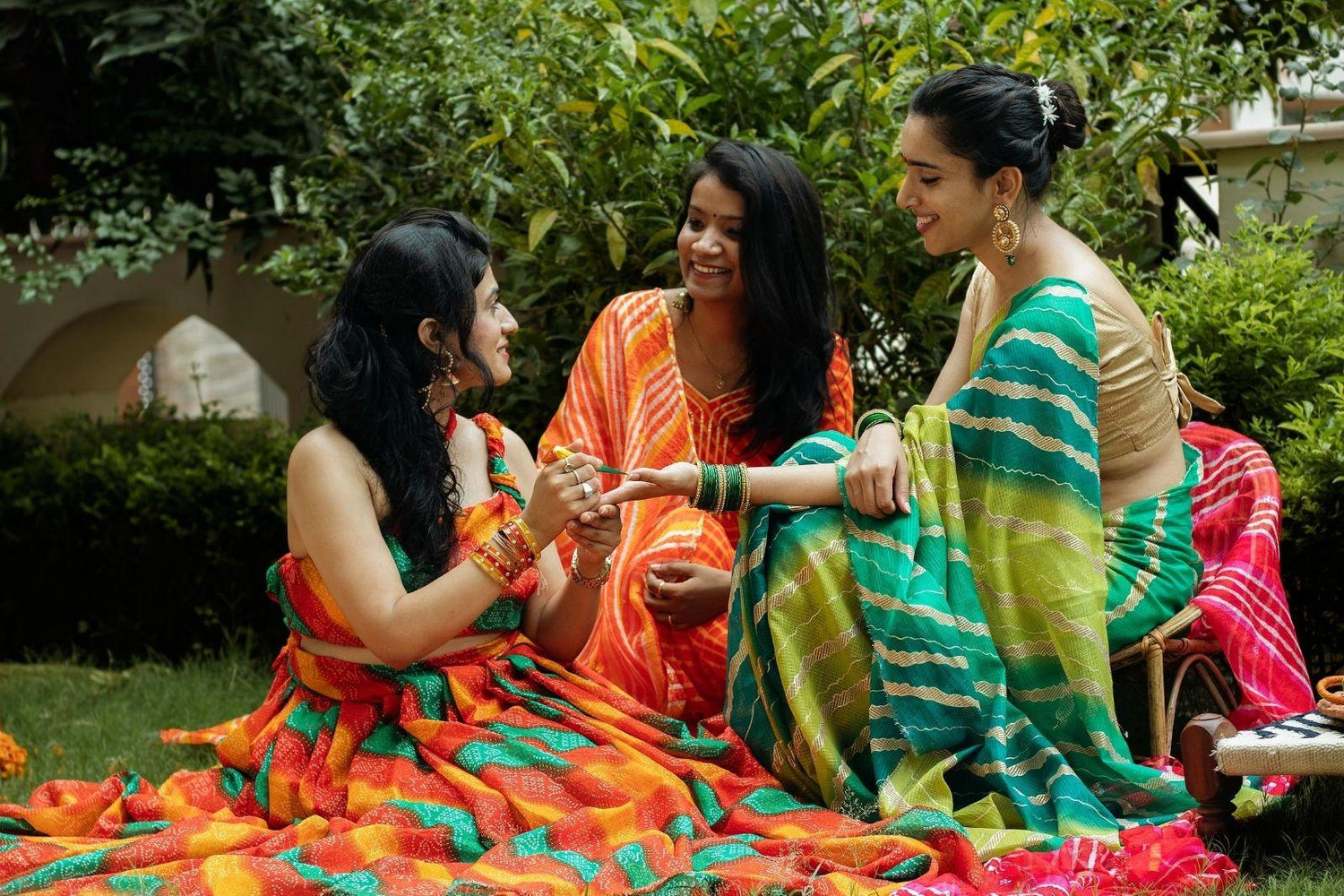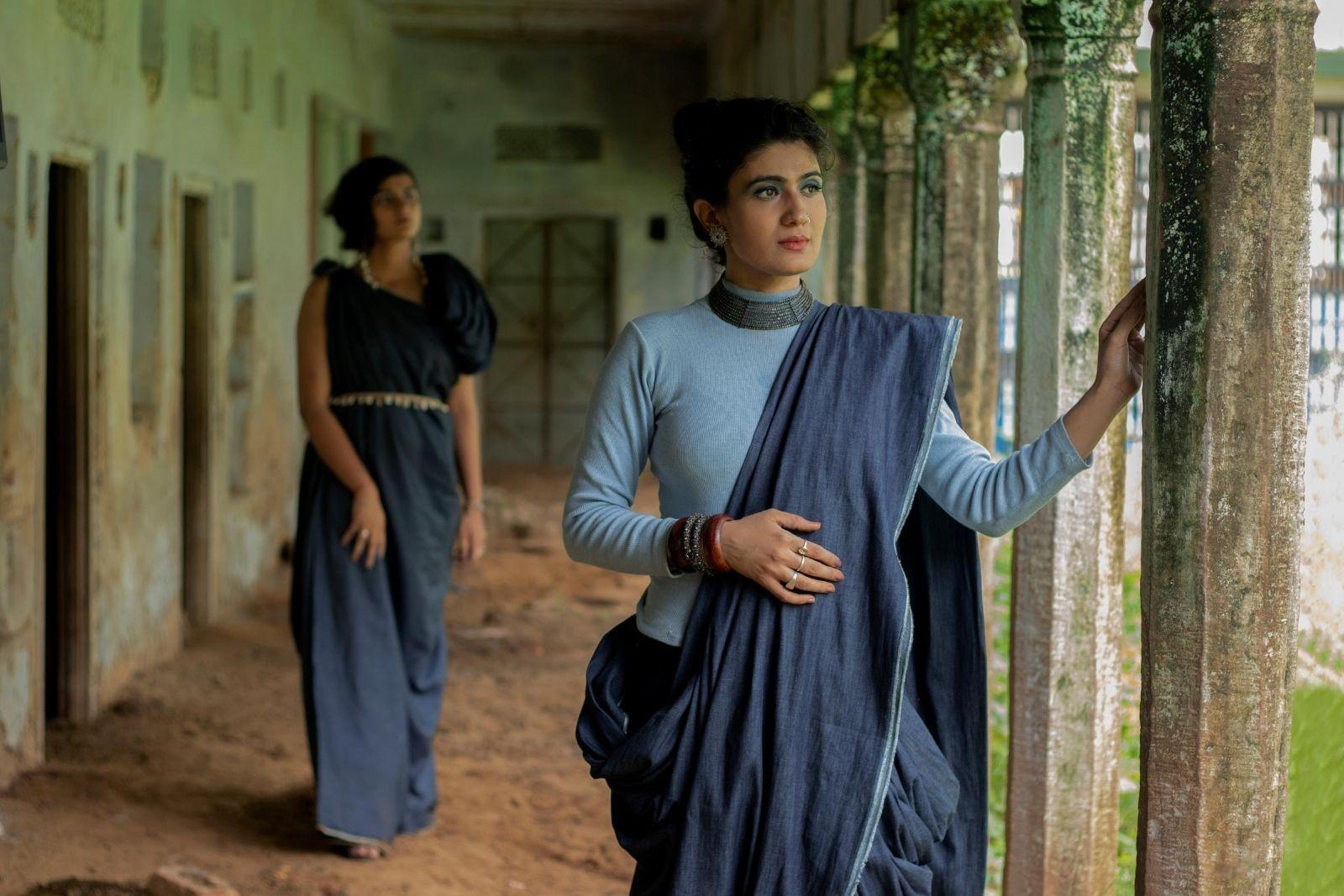The smell of earth, sips of hot chai with crisp pakoras, cozy blankets, and paper boats all bring the much-cherished memories of monsoon. But apart from these small celebrations, we as a country, celebrate the monsoon season immersed in the many delights of festivities. For a land which is traditionally agriculturist, rains signify sustenance, fertility and harvest. Read on to find out about how India’s diverse cultures celebrate the monsoon season!
1.Teej
A beloved monsoon festival, to welcome the lush green season with colourful festive celebrations which vary from one region to another! Among a few significant celebrations are married women, fasting for the well-being of their spouses and young women seeking a good partner. In line with our mythological beliefs, the festival marks the union of Lord Shiva and Goddess Parvati.
As with any other festival in our country, women dress up to the nines in time honored bandhej & Leheriya prints, delicious sweets and desserts, such as the honey-comb like dessert, Ghevar and other decadent sweets like Jalebis and Balushahi are savored all round the clock. Needless to say, we love welcoming monsoon by tucking into the indulgent treats!
2.Onam
Onam is the most popular festival among tourists in Kerala, which falls during the late monsoon season when the foliage is sumptuous with growth. During this time, one can behold why Kerala is known as God’s Own Country! Typically a harvest festival, it is celebrated with beautiful Pookalams, or flower rangolis. Women dress up in the traditional cream and gold Kasavu sarees and celebrate the harvest with traditional dances. There is a feast, known as the Onam Sadhya, which incorporates all the elements of harvest into a meal, such as fresh, seasonal fruits and vegetables and the recently harvested rice and grains. The celebration ends with snake-boat races in the backwaters of Kerala, which are filled to the brim due to the plentiful monsoon rains. The festival is a true celebration of the bounties of monsoon and nature!
3.Behdienkhlam
The legend says that there was a wandering tribe that settled down in the forests of Jowai, and the elated god of the forests, known as U-Mokhai celebrated by dancing, which one hears as thunder and lightning. Holding on the legend, celebrations begin with song and dance, and artistically decorated bamboo structures, made by the people themselves adorn the streets. Tribes in Meghalaya celebrate Behdienkhlamn, which literally translates ‘to get rid of the plague’ for which women prepare offerings to the forest gods in exchange for good health, prosperity, and protection from disease. By worshipping the forest around them, the festival reinforces the relationship people have with nature! Beautifully adorned tribal people in the scenic beauty of Meghalaya must present a sight to behold.
4.Nag Panchami
Nag Panchami celebrations reach beyond borders till Nepal. Snakes are said to be an embodiment of water bodies and are often depicted as the deity or protector of lakes, ponds, and other water bodies. While the diverse culture influences rituals from region to region, the common celebrations include offering prayers and ritualistic offerings such as milk to Naga or Snake deity, or even to alive snakes/ snake nests.
5.Aadi perukku
Aadi perukku is celebrated on the 18th day of the Tamil month of Aadi (July-August). It is a celebration of the life-sustaining abilities of water and especially celebrates the day when the Kaveri river flows over signifying the beginning of monsoon. A very auspicious day for women, who celebrate the festival as an association to their own life-sustaining ability!
The most unique way of celebrating the festival is Mulaipari. Nine types of grains (Navdhanya) are sprouted the week before and Women dressed in the auspicious shade of yellow carry the sprouted Mulaipari in a procession to the temple of the local Goddess whilst singing folk songs and dancing in celebration. Sounds like a delightful festival, doesn’t it!
6.Minjar
Minjar is a silk tassel that adorns attire & symbolizes the shoots of paddy and maize which make their appearance around the rainy season. The people of Chamba town in Himachal Pradesh celebrate their harvest in a week-long fair. Vibrant flea markets bustle with people dressed in their traditional attires, as customary Kumjari-Malhar songs fill the air. A coconut, a rupee, a seasonal fruit, and a Minjar tied in a red piece of cloth called Lohan – is thrown in the river as offerings to the river & Varuna, the god of rain.
7.Sao Joao
Sao Joao is not endemic to India, as it is a Catholic festival that celebrates the birth of St. John. Followers hold lavish feasts in celebration, but only in India is it celebrated in this unique manner: By jumping into wells, rivers, and other water bodies! you read it right, the celebrations are mainly carried out in Goa, where Sao Joao coincides with the birth of the monsoon season when the wells and water bodies are full. This supposedly signifies Baby St. John leaping from his mother’s womb and the act of baptism in the River Jordan.
The festival is vibrant and lively, with people wearing tiaras or crowns made of flowers, called kopels, and wearing clothing made with natural items!
The beauty of nature in this season warrants much celebration and felicitation, and the people of India have captured the charm beautifully in their diverse cultures and festivals! Write to us in the comments about your favourite monsoon festivals and rituals too, and let us know if we’ve missed any of them as well!




